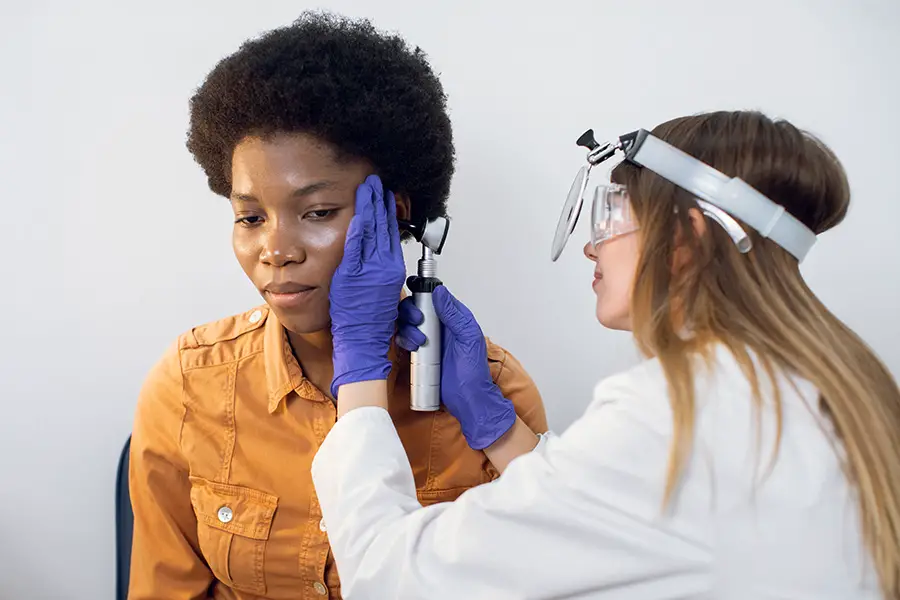Otosclerosis, a condition characterized by abnormal bone growth in the middle and inner ear, is on the cusp of significant breakthroughs in treatment and understanding. This article provides an analytical exploration of the anticipated advancements in Otosclerosis research and treatment, offering a window into the future prospects of this condition.
Innovations in Otosclerosis Treatment
The treatment landscape for otosclerosis is evolving rapidly. Researchers are exploring the use of biologics to inhibit abnormal bone growth and investigating regenerative medicine, including stem cell therapy, to restore normal hearing. These innovative approaches could revolutionize otosclerosis treatment, offering more holistic and personalized solutions.
Advances in Surgical Techniques
Surgical interventions for otosclerosis, such as stapedectomy, are being refined with the aid of advanced technologies. Minimally invasive procedures, enhanced by robotics and imaging technologies, promise fewer complications and improved outcomes. The development of next-generation cochlear implants is also on the horizon, potentially offering a more natural auditory experience for those with severe hearing loss.
The Next Frontiers in Otosclerosis Treatment
The journey towards finding an effective cure for Otosclerosis is filled with both challenges and opportunities. While existing treatments such as hearing aids, stapedectomy (a surgical procedure to improve hearing), and cochlear implants have their merits, they also have limitations. In the future, we expect the focus of treatment to shift towards more holistic, personalized approaches that not only alleviate symptoms but also slow down or halt the disease progression.
One such avenue being explored is the use of biologics – a group of treatments derived from living organisms – to inhibit the abnormal bone growth seen in Otosclerosis. Researchers are also investigating the potential of regenerative medicine, including stem cell therapy and tissue engineering, to restore normal hearing. Although these areas of research are still in their infancy, early results are promising, and further studies could potentially revolutionize the way we manage Otosclerosis.
In addition, the continued refinement of surgical techniques and prosthetic devices promises to improve the outcomes of surgical interventions for Otosclerosis. Minimally invasive procedures, powered by advancements in robotics and imaging technologies, could lead to less post-operative complications and better hearing restoration. Similarly, next-generation cochlear implants, which are becoming increasingly sophisticated, might offer improved auditory experience for those with severe hearing loss.
The Role of Genetic Research
Genetic research is shedding light on the specific genes associated with otosclerosis, opening the door to targeted gene therapies and molecular-based treatments. This area of research holds immense potential for developing personalized treatment plans based on an individual’s unique genetic makeup.
The Impact of Novel Imaging Technologies
The application of novel imaging technologies is allowing researchers to study the microstructure of affected ear bones in detail. These techniques could provide valuable insights into the disease’s progression and aid in assessing the effectiveness of various treatment methods.
The Use of Artificial Intelligence in Otosclerosis Research
Artificial intelligence is increasingly being used to analyze complex audiological data, leading to better diagnostic accuracy and personalized treatment plans. This technological advancement is likely to become a mainstay in otosclerosis research and treatment.
FAQ Section
What is Otosclerosis? Otosclerosis is a progressive ear disorder characterized by abnormal bone growth, often resulting in hearing loss.
What are the Current Treatments for Otosclerosis? Current treatments include hearing aids, stapedectomy, and cochlear implants.
How Does Genetic Research Influence Otosclerosis Treatment? Genetic research helps identify specific genes associated with otosclerosis, paving the way for targeted therapies.
What Role Do Imaging Technologies Play in Otosclerosis? Advanced imaging technologies allow for detailed study of the ear’s microstructure, aiding in diagnosis and treatment assessment.
Can Artificial Intelligence Aid in Otosclerosis Research? Yes, AI can analyze complex data, improving diagnostic accuracy and treatment personalization.
What Future Treatments are Being Explored for Otosclerosis? Future treatments include biologics, regenerative medicine, and advanced surgical techniques.
Practical Tips
- Stay Informed: Keep abreast of the latest research and treatment developments in otosclerosis.
- Seek Early Diagnosis: Early detection is crucial for effective management of otosclerosis.
- Explore All Treatment Options: Consider hearing aids, surgery, and emerging treatments.
- Participate in Clinical Trials: Contributing to research can help advance treatment options.
- Consult with Specialists: Regular consultations with audiologists and ENT specialists are essential.
Annotated References:
- Genome-wide screen of otosclerosis in population biobanks: 27 loci and shared associations with skeletal structure – A study from Nature Communications exploring the genetic aspects of otosclerosis.
- Conservative Otosclerosis Treatment With Sodium Fluoride and Other Modern Formulations: A Systematic Review – A review from PMC – NCBI discussing modern treatment options for otosclerosis.
HEARING LOSS NEWS



